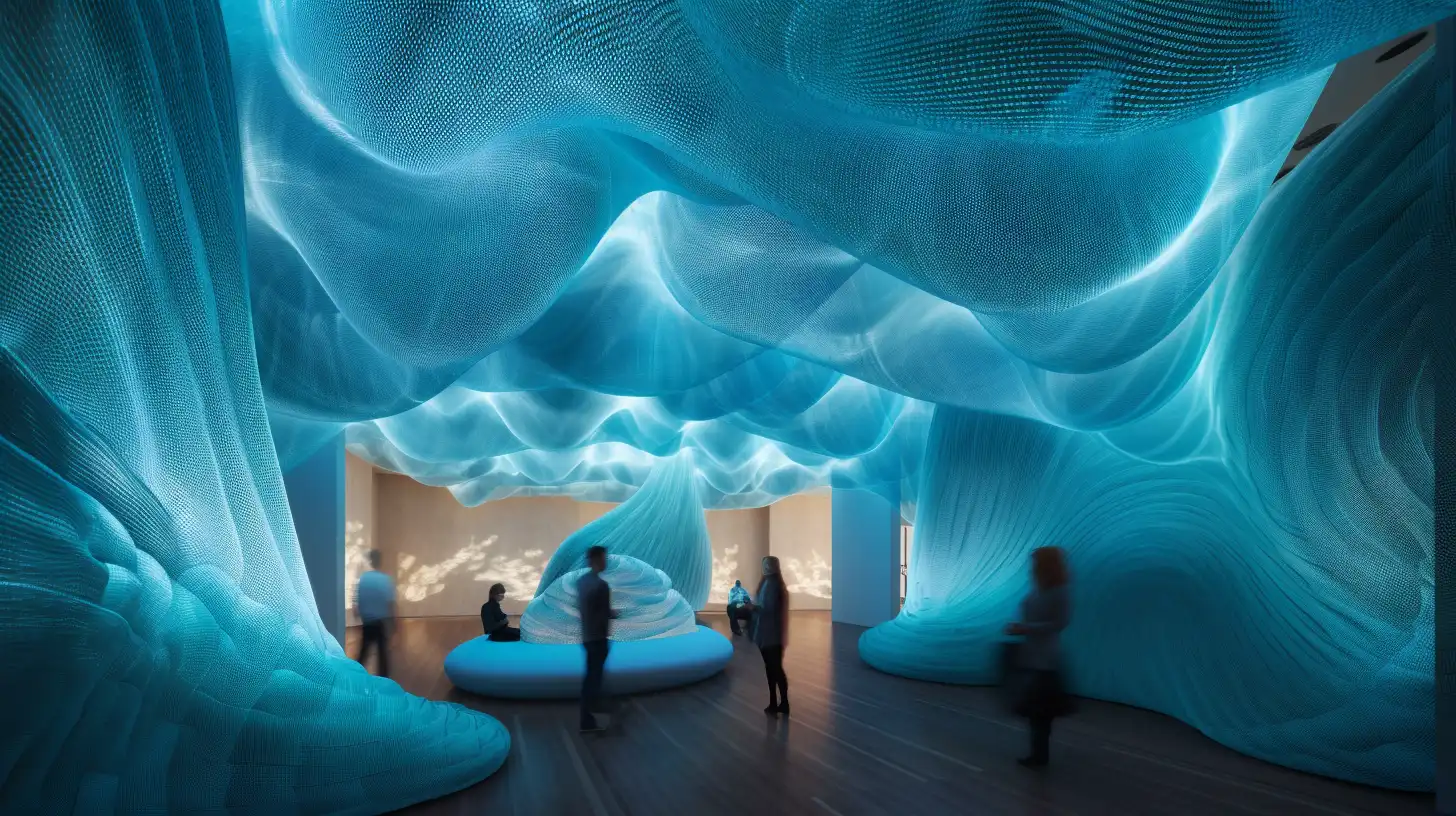This fast-paced workshop will focus on generating images of provocative spatial volumes (interior or exterior), along with effects and atmospherics utilizing surface, lighting, textures, materials, shape, etc.

Text-to-image diffusion models are an accessible way for artists, architects, and designers to experiment with Artificial Intelligence. MidJourney is one such platform that engages our imaginations and lets us explore and test design ideas in a fraction of the time it would traditionally take to draw, model, or render. Joshua Vermillion will lead this MidJourney workshop with an emphasis on generating surface, material, and lighting effects and atmospherics. Along the way, we will develop and craft prompts (the instructions we give to the AI model) as a way to sharpen your ideas and augment your design process.
Part of the value of using a diffusion model like MidJourney is getting unexpected interpretations of your ideas—things you might have never thought of that extend and challenge your imagination. The first session of this workshop will emphasize generating these non-determinate and surprising outcomes that MidJourney generates so well–the happy accidents, the counter-intuitive, and the uncanny—all focused on spatial effects.
The second session will use image prompts and MidJourney’s new blend operation to gain more control over the generated outcomes as well as to integrate traditional design sketches, models, and photos into this generative AI process. Both sessions will use a combination of demonstrations followed by hands-on individual design challenges, culminating in one last group-challenge/project.
This fast-paced workshop will focus on generating images of provocative spatial volumes (interior or exterior), along with effects and atmospherics utilizing surface, lighting, textures, materials, shape, etc. We will iteratively edit, generate, re-roll, and blend prompts, as well as the resulting images.
We will also examine and compare the differences in the outputs from various MidJourney models and workflows (for instance, MJ’s v3, v4, and v5 models, the remastering and blend options, and adjusting aspect ratios) all of which affect the coherence and “creativity” of the results.
By the end of this workshop, participants will have demonstrated and practiced several workflows in MidJourney for developing their design ideas as well as generating visually compelling design imagery.
Along the way we will learn about many of the settings in MidJourney that can help us iteratively work through an idea while utilizing expressive design language and prompt-craft. Ultimately, everyone will come away with several different ways to weave AI into their own design process in order to augment their creative endeavors.
maystudio.pl 2025-01-20 22:45
Thank you for the valuable course.
Yenniffer Zamira Duque Arias 2025-11-03 16:55
Amazing workshop!